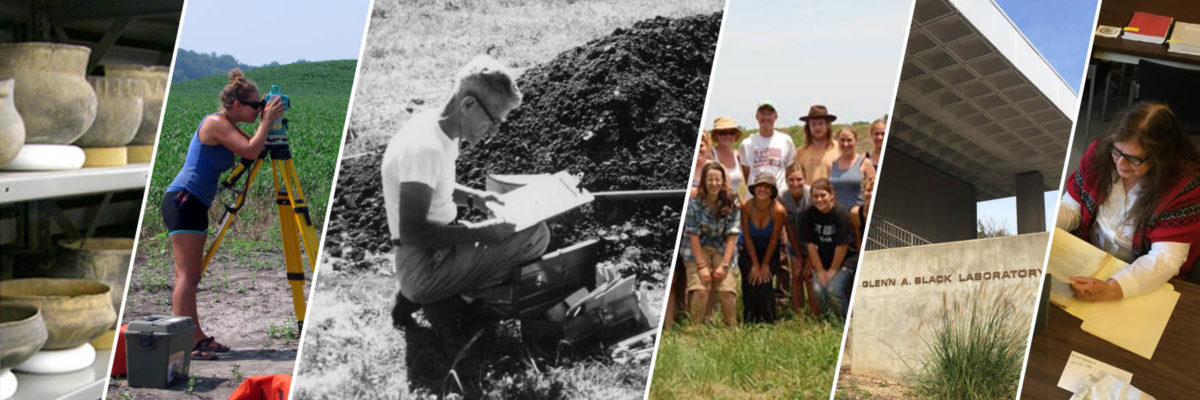My name is Brianna McLaughlin and this summer I interned at the Glenn Black Laboratory of Archaeology- James Kellar Library. To give you a little background about myself, I graduated from the University of Evansville in 2014 with a degree in History and Archaeology. I’m currently working on my Masters of Library Science with a specialization in Archives. During my undergraduate degree, I learned pretty quickly that even though I love archaeology as a discipline, field archaeology wasn’t for me. Alternatively, an opportunity to use my knowledge of archaeology in an archives space was absolutely what I wanted.
I started the summer compiling an inventory of the associated documents for the archaeological artifacts housed downstairs. I went through about 16 cabinets full of boxes and recorded what information they contained as well as if anything required archival boxes. Even as I was creating this inventory, staff members were asking me questions about my findings and using the document. It was clear that what I was creating was of immediate importance to the Glenn Black Lab. I’ve known many students who have had internships in which they were not entrusted with projects that would make a difference to the institution, so I’m grateful that I was able to contribute.
The project that lasted for the remainder of the summer was accessioning and processing the papers of the institution’s namesake, Glenn Black. I began with about 15 boxes of various sizes of paper materials, most of which had been organized by Glenn Black, and some that hadn’t been organized at all. I also had about a dozen three dimensional items that were in an exhibit at the beginning of the summer. I started my first pass to see what I was dealing with. A large portion of Black’s papers were reference materials that he used for classes, lectures, and publications. He had many copies of each, so I was able to discard all but the original and the best copy. Just this process significantly minimized the collection. I also discarded and replaced the onion paper dividers between images. At this point, I began organizing the collection. I maintained Black’s organization to the greatest extent possible, even those that made me cringe such as arranging documents chronologically with the most recent at the front of the folder. I determined that there were 11 series within the collection, and thus began refoldering everything, making sure none of the folders became thicker than ¼ inch and each archival box was not too full. By the end of this process, I had 24 uniformly sized Hollinger boxes full of folders. Finally, it was time to write a finding aid. Unfortunately, I only had a week left at this point and therefore didn’t have time to learn EAD and create a finding aid using the software. Instead, I created a word document formatted like the finding aids on Archives Online that could be easily converted to EAD. After creating labels for the 24 boxes, the Glenn Black Papers are officially available for perusal.
I feel incredibly lucky that I can have my name on one of the most important archival collections held at this institution. Being able to list the Glenn Black Papers on my CV will be beneficial when I graduate and begin my job hunt, and the skills I practiced throughout the process will undoubtedly help me in my career field.


